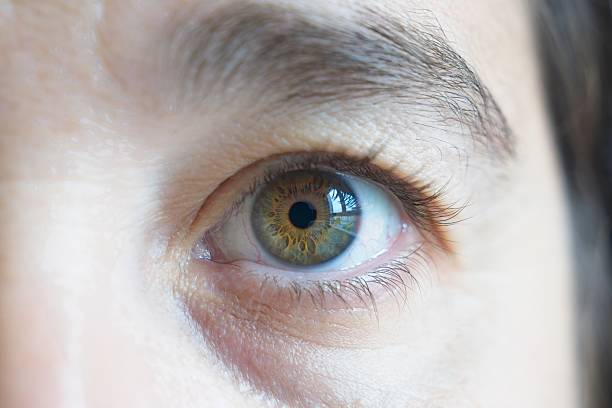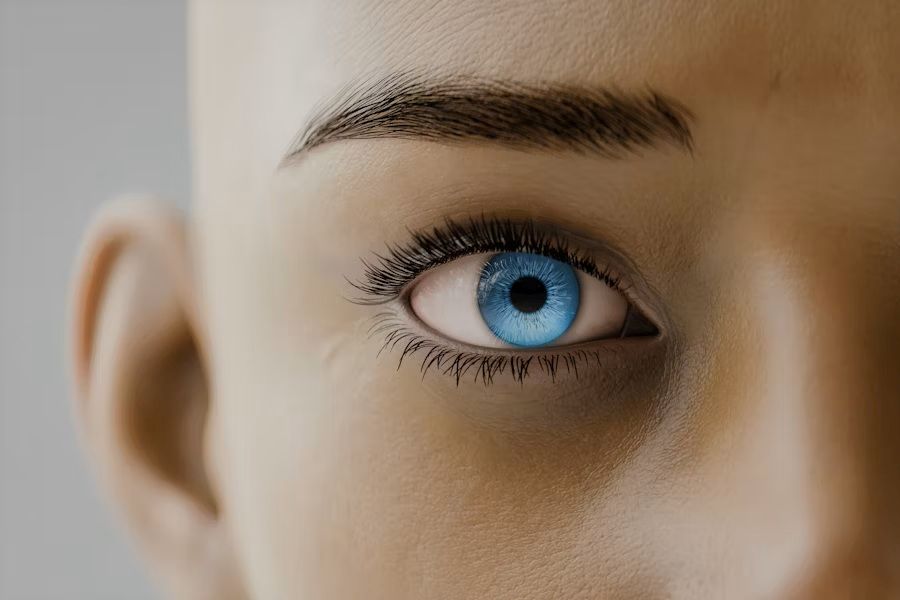Váš vozík je prázdný
8 Fascinating Facts About Human Eyes That Will Surprise You

The human eye is one of nature's most remarkable achievements - a complex organ that allows us to perceive the world in stunning detail and vibrant color. In this comprehensive exploration, we'll uncover eight incredible facts about our eyes that showcase just how extraordinary these organs truly are, from their lightning-fast movements to their unique identifying patterns.
1. The Evolution of Human Eyes
The human eye's evolution is a testament to nature's ingenuity, developing over millions of years to become the sophisticated organ we have today. Our eyes began as simple light-sensitive cells in ancient organisms and gradually evolved into the complex structure we now possess.
Modern human eyes contain approximately 2 million working parts and can distinguish about 10 million different colors. This remarkable evolution has given us some of the most precise and capable eyes in the animal kingdom, particularly when it comes to color vision and detail perception.
The development of forward-facing eyes gave our ancestors a crucial evolutionary advantage - stereoscopic vision. This depth perception capability allowed early humans to better judge distances, crucial for both hunting and survival.
2. Light and Color Processing
Your eyes process light in a way that's more sophisticated than the most advanced cameras. When light enters your eye, it passes through the cornea and lens, which work together to focus the image on your retina. The retina contains approximately 126 million photoreceptors - 6 million cones for color vision and 120 million rods for black-and-white and low-light vision.
The cones in your retina are divided into three types, each sensitive to different wavelengths of light: red, green, and blue. Through the combination of signals from these three types of cones, your brain can interpret millions of different color variations.
What's even more fascinating is the speed at which this processing occurs. Your eyes can process and transmit information to your brain at a rate of about 10 million bits per second - equivalent to an ethernet connection.
3. Eye Movement Speed
One of the most remarkable features of human eyes is their incredible speed. Your eyes can move up to 100 times per second, making them among the fastest muscles in your body. These rapid movements, called saccades, allow you to scan your environment efficiently and build a complete picture of your surroundings.
During these movements, your brain actually turns off visual processing momentarily to prevent motion blur. This process happens so quickly that you never notice these brief moments of blindness, which occur thousands of times each day.
The average person blinks about 15-20 times per minute, with each blink lasting between 100-150 milliseconds. That means you spend about 10% of your waking hours with your eyes closed just from blinking!
4. Unique Eye Patterns
Just like fingerprints, every person's iris pattern is unique. Even identical twins have different iris patterns, making iris recognition one of the most reliable forms of biometric identification. The iris contains approximately 250 distinctive characteristics, compared to just 40-60 points of comparison in fingerprints.
This uniqueness extends beyond just the iris. The blood vessel pattern in your retina is also completely unique to you. These patterns are so reliable that retinal scanning is used in high-security facilities worldwide.
The complexity of these patterns is astounding - the probability of two people having identical iris patterns is approximately 1 in 10^78, making it virtually impossible for two people to have the same eye pattern.
5. Eye Color Changes
Contrary to popular belief, eye color isn't fixed throughout your lifetime. While dramatic changes are rare, subtle shifts in eye color can occur due to various factors including age, emotion, and exposure to light.
Babies born with blue eyes may develop different eye colors during their first year of life as melanin production increases. This process can continue until about age three, when eye color typically stabilizes.
Some medical conditions and medications can also affect eye color. Additionally, strong emotions can cause your pupils to dilate or contract, which can make your eyes appear to change color slightly due to the way light reflects off the iris.
6. Brain-Eye Connection
Your eyes are actually part of your brain - they develop as outgrowths of brain tissue during fetal development. This connection is maintained throughout life, with about 70% of your body's sensory receptors being located in your eyes.
The optic nerve, which connects each eye to the brain, contains approximately one million nerve fibers. This massive information highway allows your visual system to process incredible amounts of data every second.
Your brain dedicates about 30% of its cortex to visual processing, compared to just 8% for touch and 3% for hearing. This significant allocation of brain power demonstrates just how crucial vision is to human survival and function.
7. Peripheral Vision Capabilities
Human peripheral vision is more sophisticated than many realize. While we focus on what's directly in front of us, our peripheral vision can detect motion and changes in light across nearly 180 degrees.
Our peripheral vision is particularly sensitive to movement, an evolutionary adaptation that helped our ancestors detect potential predators or prey. This sensitivity is why you can often notice movement "out of the corner of your eye."
Interestingly, peripheral vision also plays a crucial role in night vision. The rods in our retina, which are responsible for night vision, are concentrated around the edges of our retina rather than in the center.
8. Night Vision Adaptation
The human eye's ability to adapt to darkness is remarkable. When you enter a dark room, it takes about 30-45 minutes for your eyes to fully adapt to the darkness. During this time, your pupils dilate to their maximum size, and your retinal chemistry changes to become more sensitive to light.
This process involves the regeneration of rhodopsin, also known as "visual purple," in your rod cells. Once fully dark-adapted, your eyes become approximately 100,000 times more sensitive to light than they are in bright conditions.
However, this adaptation can be instantly reset by exposure to bright light, which is why it's recommended to use red lights for activities requiring night vision - red light has minimal impact on dark adaptation.
Final Thoughts
The human eye is truly a marvel of biological engineering, combining incredible speed, precision, and adaptability. Understanding these fascinating facts about our eyes not only helps us appreciate their complexity but also reminds us of the importance of protecting these precious organs.
Regular eye examinations, proper protection from UV light, and maintaining a healthy lifestyle are crucial for preserving our vision. As technology continues to advance, our understanding of the human eye grows deeper, leading to better treatments and possibly even enhancements to human vision in the future.
Zanechte komentář
Představení budou schváleny komentáře.




